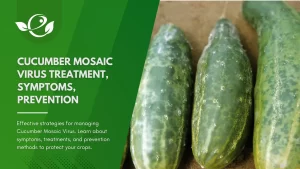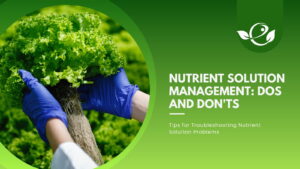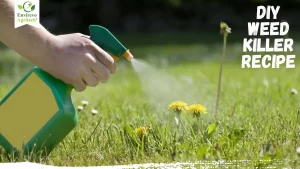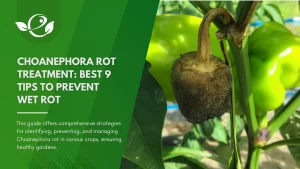Table of Contents
In the quiet orchestration of plant life, where sunlight, water, and nutrients perform their symphony, boron plays an indispensable, yet often overlooked, role. While nitrogen, phosphorus, and potassium may steal the limelight in discussions about plant health, boron operates with quiet efficiency, underpinning the very structures that sustain growth and vitality. Despite its understated presence, boron is critical to a plant’s development, influencing everything from cell wall integrity to reproductive success. The absence or insufficiency of this micronutrient can lead to a cascade of detrimental effects, manifesting as stunted growth, poor crop yields, and diminished plant resilience.
This guide is designed to illuminate the significance of boron in plant nutrition, providing a comprehensive exploration of how this micronutrient impacts plant health, the conditions that lead to its deficiency, and the practical steps that can be taken to prevent and correct such nutrient deficiencies. Whether you are a seasoned farmer, a dedicated gardener, or someone with a burgeoning interest in plant care, understanding boron deficiency is crucial to ensuring the health and productivity of your plants.
Understanding Boron in Plants
Role of Boron in Plant Physiology
Boron is a micronutrient, meaning it is required by plants in relatively small quantities, yet its impact on plant physiology is profound. One of the primary functions of boron is in the formation and stability of cell walls. It contributes to the structural integrity of cell walls by cross-linking pectic polysaccharides, which are crucial components of the plant cell wall matrix. This process not only provides mechanical strength to the plant but also facilitates the movement of water and nutrients within the plant’s tissues.
Beyond its role in cell wall structure, boron is essential for the reproductive development of plants. It plays a critical part in pollen tube growth, ensuring successful pollination and seed formation. Without adequate boron, pollen tubes may fail to elongate properly, leading to poor fruit and seed set, which directly affects crop yields.
Moreover, boron influences the movement of sugars and hormones within the plant. It helps in the transport of sugars produced during photosynthesis from the leaves to other parts of the plant where energy is needed for growth and development. Boron also modulates the synthesis and activity of certain plant hormones, further influencing growth patterns and responses to environmental stresses.
Sources of Boron in Soil
Boron naturally occurs in the soil, primarily derived from the weathering of rocks and minerals. It is typically present in soil in the form of borate ions, which are available for plant uptake. The concentration of boron in soil can vary widely depending on several factors, including the soil’s parent material, organic matter content, and historical agricultural practices.
In addition to natural sources, boron can also be introduced into the soil through human activities. Fertilizers and soil amendments containing boron are commonly used in agriculture to address deficiencies. These fertilizers may include borax, boric acid, and other boron-containing compounds, which can be applied directly to the soil or as foliar sprays.
However, the availability of boron to plants is not solely dependent on its presence in the soil. Soil pH, moisture levels, and the presence of other nutrients can significantly influence how much boron is available for plant uptake. For instance, boron tends to be more available in soils with a slightly acidic to neutral pH, while its availability decreases in highly alkaline soils.
Causes of Boron Deficiency in plants
Soil Factors
- Soil pH: The primary cause of boron deficiency in plants is often linked to the characteristics of the soil in which they are grown. Soil pH is a critical factor; boron becomes less available to plants as soil pH increases, particularly in soils with a pH above 7.5. In alkaline soils, boron tends to bind with other minerals, making it less accessible to plant roots. Conversely, in very acidic soils (below pH 5.0), boron can become overly available, leading to toxicity, although this is less common.
- Soil texture: Soil texture also plays a significant role in boron availability. Sandy soils, with their large particle size and low organic matter content, are particularly prone to boron leaching. This means that boron can be easily washed away from the root zone by rain or irrigation water, leading to deficiency. In contrast, clay soils, which have a higher capacity to retain nutrients, may still experience boron deficiency if they are alkaline or have low organic matter.
- Organic matter content: The organic matter content of the soil is another crucial factor. Soils rich in organic matter tend to have higher boron retention because organic matter can bind boron, preventing it from leaching away. However, in soils with low organic content, such as those heavily tilled or those subjected to intensive agriculture, boron is more likely to be deficient.
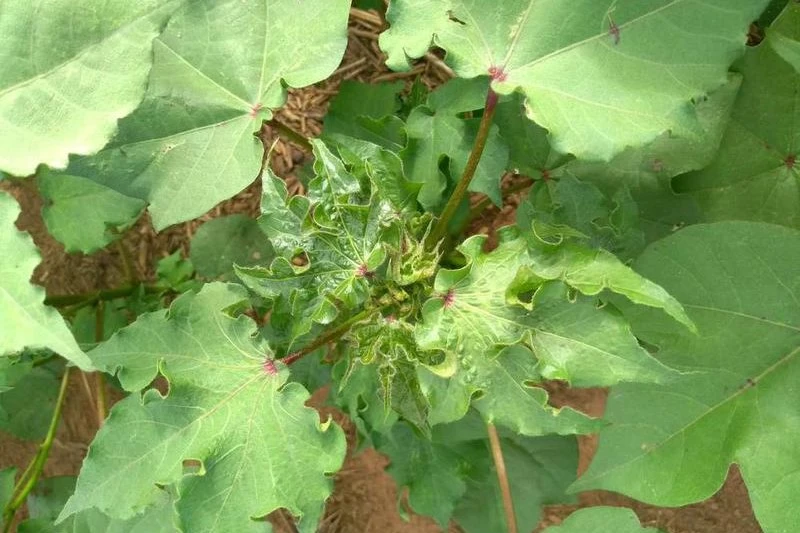
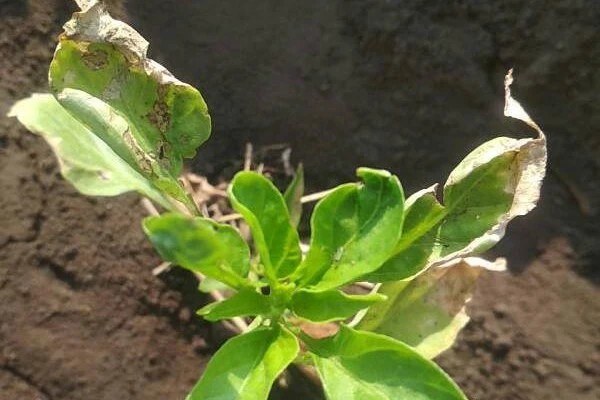
Environmental Factors
- Rainfall and irrigation: Environmental conditions can exacerbate boron deficiency in plants. One of the most significant environmental factors is rainfall and irrigation. Excessive rainfall or over-irrigation can lead to leaching, particularly in sandy soils, where boron is already prone to being washed away. Conversely, drought conditions can also cause boron deficiency, as the reduced soil moisture limits the movement of boron to plant roots, making it difficult for plants to absorb sufficient amounts.
- Climate conditions: Climate conditions, including temperature and weather patterns, also influence boron availability. In cooler climates, where soil microbial activity is slower, the mineralization of boron from organic matter is less efficient, potentially leading to deficiency. Additionally, regions with high temperatures and dry conditions may experience increased evaporation rates, which can concentrate boron in the soil solution to toxic levels if not managed properly.
Crop-Specific Needs
- Not all plants require the same amount of boron, and some crops are more sensitive to boron deficiency than others. For example, crops like broccoli, cauliflower, and other brassicas have higher boron requirements compared to cereals like wheat or corn. Similarly, fruit and nut trees, such as apples and almonds, are particularly susceptible to boron deficiency, which can severely impact fruit set and quality.
- Understanding the specific boron needs of the crops you are growing is essential for effective nutrient management. High-demand crops may require more frequent monitoring and adjustments to ensure they receive adequate boron throughout their growth cycle.
Identifying Boron Deficiency in Plants
Visual Symptoms of Boron Deficiency
One of the most straightforward ways to identify boron deficiency in plants is by observing visual symptoms. While these symptoms can vary depending on the plant species, there are some common indicators that can help you diagnose a boron deficiency.
- Leaf Deformities: The first sign is usually the discolouration and thickening of young leaves. Yellowing may be uniform, or diffusely interveinal, fading gradually with distance from the main veins. Leaves of boron-deficient plants often show signs of deformation. This can include thickened, brittle, or curled leaves, as well as the appearance of chlorosis (yellowing) at the tips and edges of leaves. In severe cases, the leaves may develop necrotic spots or become entirely necrotic, leading to leaf drop.
- Growth Stunting: A common symptom of boron deficiency is stunted growth. Affected plants may exhibit reduced shoot and root growth, leading to overall smaller and weaker plants. This stunting occurs because boron is essential for cell division and elongation, processes that are crucial for plant growth.
- Poor Reproductive Development: Boron deficiency can have a significant impact on a plant’s reproductive structures. In flowering plants, you may notice poor or incomplete flower development, leading to reduced pollination and fruit set. For example, in fruit trees, boron deficiency can cause fruits to be misshapen, cracked, or undersized. In crops like broccoli, the heads may fail to form properly or may become hollow.
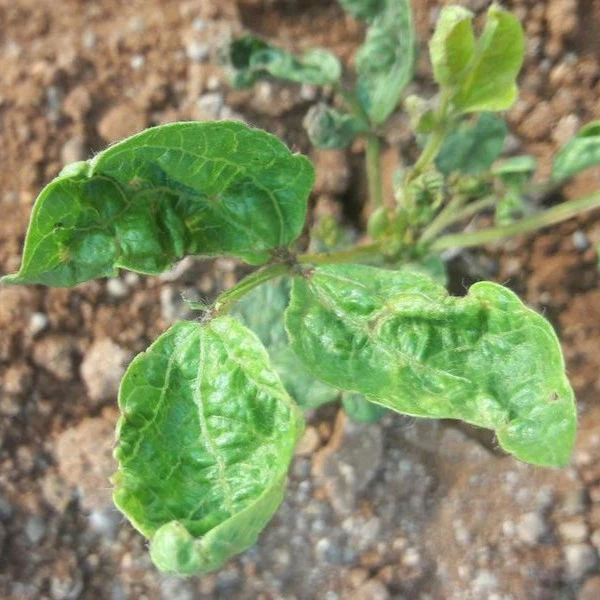
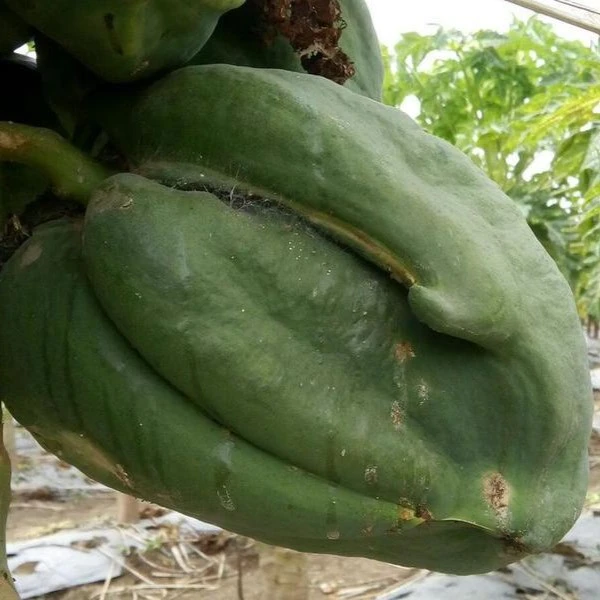

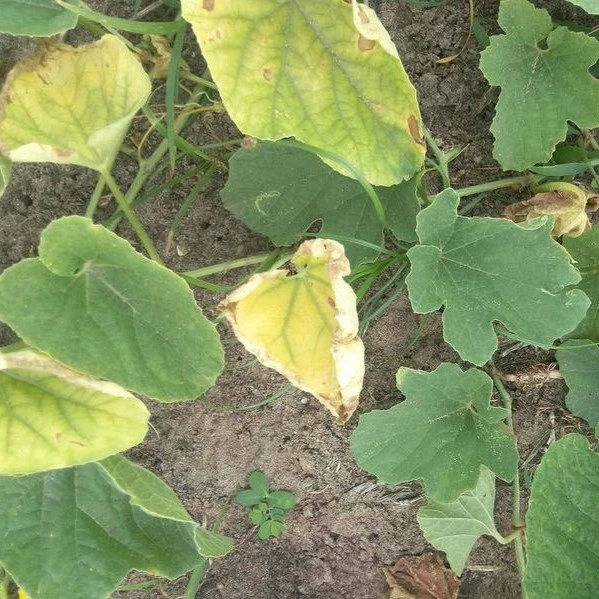
Diagnostic Tools
While visual symptoms provide an initial indication of boron deficiency, confirming the diagnosis requires more precise diagnostic tools. Two primary methods are used to assess boron levels in plants: soil testing and tissue testing.
Soil Testing: Soil testing is the most common method for determining boron availability in the soil. To conduct a soil test, you will need to collect soil samples from different areas of your field or garden and send them to a laboratory for analysis. The lab will measure the boron concentration in the soil and provide recommendations based on the specific needs of your crops and soil conditions. Soil tests should be conducted regularly, especially in areas prone to boron deficiency, to monitor changes in nutrient levels.
Tissue Testing: Tissue testing involves analyzing the boron content in plant tissues, such as leaves or stems. This method is particularly useful for diagnosing boron deficiency in crops that are already growing, as it provides a direct measurement of the nutrient’s presence within the plant. Tissue samples should be collected from healthy and symptomatic plants for comparison. The results can help you determine whether boron deficiency is affecting your crops and guide your corrective actions.
Differentiating from Other Nutrient Deficiencies
Boron deficiency can sometimes be confused with other nutrient deficiencies, as some symptoms may overlap. For instance, calcium deficiency can also cause leaf deformation and poor fruit development, while nitrogen deficiency may result in stunted growth and chlorosis. However, there are some distinguishing features of boron deficiency that can help differentiate it from other nutrient issues.
One key difference is the pattern of symptoms. Boron deficiency often affects the youngest leaves and growing points first, as boron is not easily mobile within the plant. In contrast, deficiencies of mobile nutrients like nitrogen typically start with the older leaves, as the plant redistributes the nutrient to new growth.
Another distinguishing factor is the nature of the deformities. Boron deficiency tends to cause brittle, thickened leaves with necrotic spots, whereas calcium deficiency often leads to leathery or soft, distorted leaves.
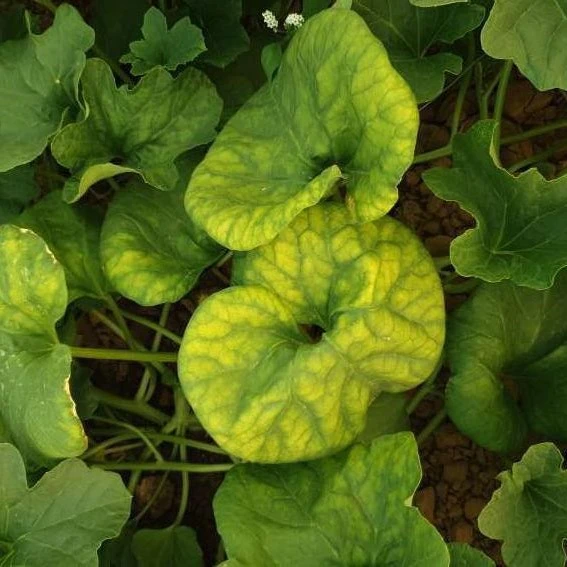
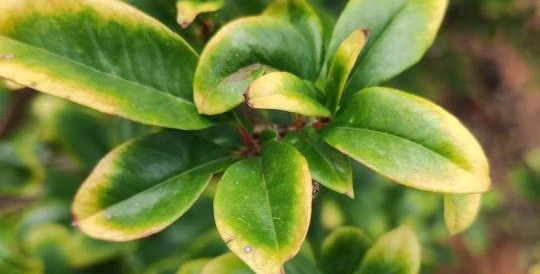
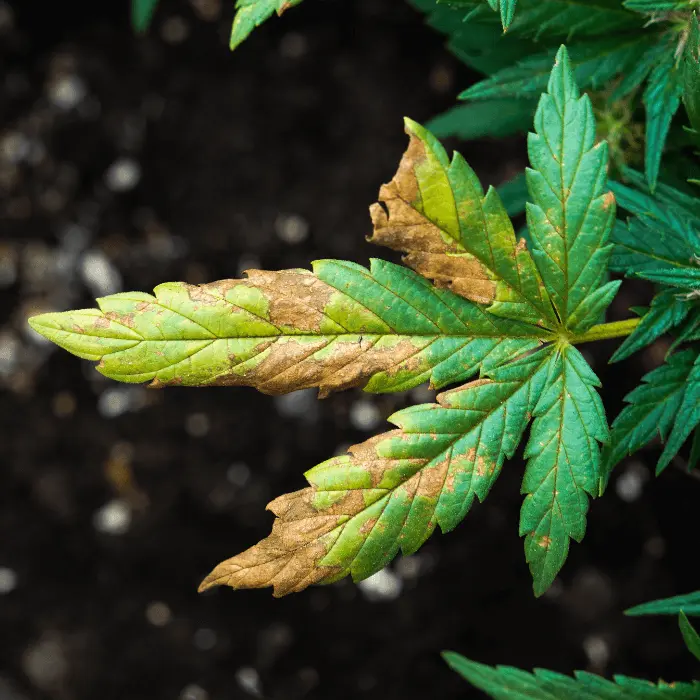
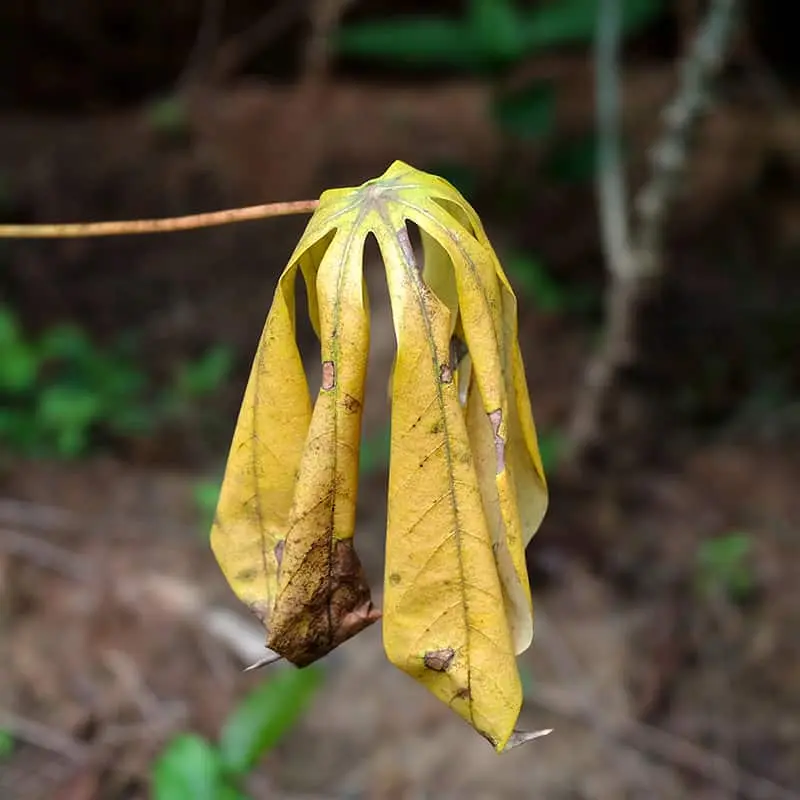
Preventing and Correcting Boron Deficiency
Soil Management Practices
- Adjusting soil pH: Preventing boron deficiency starts with good soil management practices that promote the availability and retention of boron in the soil. One of the most important factors to consider is soil pH, as it directly influences boron availability. In soils with a high pH, efforts should be made to lower the pH to a more neutral range (pH 6.0 to 7.0) using soil amendments like sulfur or acidifying fertilizers. This can help increase the availability of boron to plants.
- Organic matter management: In addition to pH management, increasing the organic matter content of the soil can significantly improve boron retention. Adding compost, green manure, or other organic amendments helps bind boron in the soil, reducing leaching and making it more available for plant uptake. Regularly incorporating organic matter into the soil is particularly important in sandy soils, where boron is more prone to being washed away.
- Irrigation management: Irrigation management is another critical aspect of preventing boron deficiency. Over-irrigation can lead to excessive leaching of boron, especially in light, sandy soils. On the other hand, under-irrigation can limit boron uptake due to reduced soil moisture. Therefore, it’s important to strike a balance by providing sufficient water to meet the needs of your crops without causing nutrient loss.
Fertilization Strategies
When natural soil boron levels are insufficient, fertilization becomes necessary to correct deficiencies and ensure adequate boron availability for crops. Several types of boron-containing fertilizers are available, each with its benefits and application methods.
- Borax (Sodium Tetraborate): Borax is one of the most common sources of boron used in agriculture. It is typically applied to the soil and can be broadcast or incorporated into the soil before planting. Borax is highly effective in correcting boron deficiency, but care must be taken to apply it at the recommended rates, as excessive application can lead to boron toxicity.
- Boric Acid: Boric acid is another widely used boron fertilizer, often applied as a foliar spray. You can also use disodium octaborate tetrahydrate (Boron 20%) for foliar spray. Foliar applications are particularly useful for providing a quick boost of boron to plants during critical growth stages, such as flowering and fruiting. This method ensures that boron is directly absorbed by the leaves and can be effective in addressing deficiencies in crops that require immediate intervention.
- Granular Boron Fertilizers: These fertilizers are often used in larger-scale agricultural operations and can be applied with standard fertilizer spreaders. Granular boron fertilizers release boron slowly over time, providing a steady supply of the nutrients throughout the growing season. This type of fertilizer is ideal for crops with a long growing period or for soils with a high risk of boron leaching.
Further recommendations:
- It is recommended to do a soil test before the start of the cropping season to optimize your crop
production. - It is better to apply boron to the soil because foliar sprays can damage leaves on many crops.
When applying boron fertilizers, it’s essential to follow the recommended application rates and timing to avoid both deficiency and toxicity. Boron is required in small quantities, and over-application can be just as detrimental as under-application. Regular soil and tissue testing can help you fine-tune your fertilization strategy and ensure that your crops receive the right amount of boron.
Monitoring and Maintenance
Once boron levels have been corrected, ongoing monitoring and maintenance are necessary to prevent future deficiencies. Regular soil testing should be part of your routine soil management practices, especially in areas where boron deficiency is common. These tests will help you track changes in boron levels over time and make any necessary adjustments to your fertilization and soil management practices.
Tissue testing during the growing season can also provide valuable insights into the boron status of your crops. By comparing the boron content of plant tissues with established sufficiency ranges, you can determine whether additional boron applications are needed and whether your current fertilization program is effective.
In addition to testing, it’s important to stay vigilant for any signs of boron deficiency in your plants. Regularly inspect your crops for visual symptoms, particularly during critical growth stages such as flowering and fruiting. Early detection of deficiency symptoms allows for prompt corrective action, minimizing the impact on crop yields and quality.
Preventive Measures (In a Nutshell)
- Avoid soils with a high pH and are rich in clay minerals, iron or aluminum oxides.
- Avoid high air humidity and low soil moisture.
- Do not over-fertilize or lime the soils.
- Avoid over-watering the crops.
- Have the soil tested regularly to gain a thorough understanding of the nutrient levels of your field.
Conclusion
Boron may be a micronutrient, but its impact on plant health and productivity is anything but small. Understanding the role of boron in plant physiology, the factors that contribute to its deficiency, and the strategies for preventing and correcting deficiencies are crucial for anyone involved in plant care and agriculture.
By taking a proactive approach to boron management—through regular testing, tailored fertilization, and good soil management practices—you can ensure that your plants have the boron they need to thrive. Whether you’re growing crops in a commercial setting or tending to a garden at home, paying attention to boron can make a significant difference in the health and success of your plants.
Frequently Asked Questions (FAQ)
What are the most common signs of boron deficiency in plants?
Common signs of boron deficiency include stunted growth, leaf deformities (such as thickened, brittle, or curled leaves), and poor reproductive development (e.g., poor flower and fruit set). Symptoms can vary by crop, so it’s important to be familiar with the specific signs in the plants you are growing.
How can I test my soil for boron deficiency?
Soil testing is the most reliable way to determine boron levels in your soil. Collect soil samples from different areas of your field or garden and send them to a laboratory for analysis. The lab will provide a report on boron concentration and recommendations for corrective action if needed.
Can boron toxicity occur, and how can it be prevented?
Yes, boron toxicity can occur if too much boron is applied to the soil or if boron accumulates due to high levels of irrigation water or soil pH. To prevent toxicity, follow recommended application rates for boron fertilizers, regularly test soil and tissue boron levels, and avoid over-irrigation in areas prone to boron accumulation.
What are the best methods for applying boron fertilizers?
Boron fertilizers can be applied to the soil as granular products or as foliar sprays. Soil applications are best for correcting long-term deficiencies, while foliar sprays provide a quick boost of boron during critical growth stages. It’s important to follow the recommended rates and timing for your specific crop and soil conditions.
How often should I test my soil for boron?
Regular soil testing should be conducted at least once a year, especially in areas prone to boron deficiency. More frequent testing may be necessary if you are growing high-demand crops or if you have experienced boron deficiency in the past. Tissue testing during the growing season can also help monitor boron levels in your plants.


